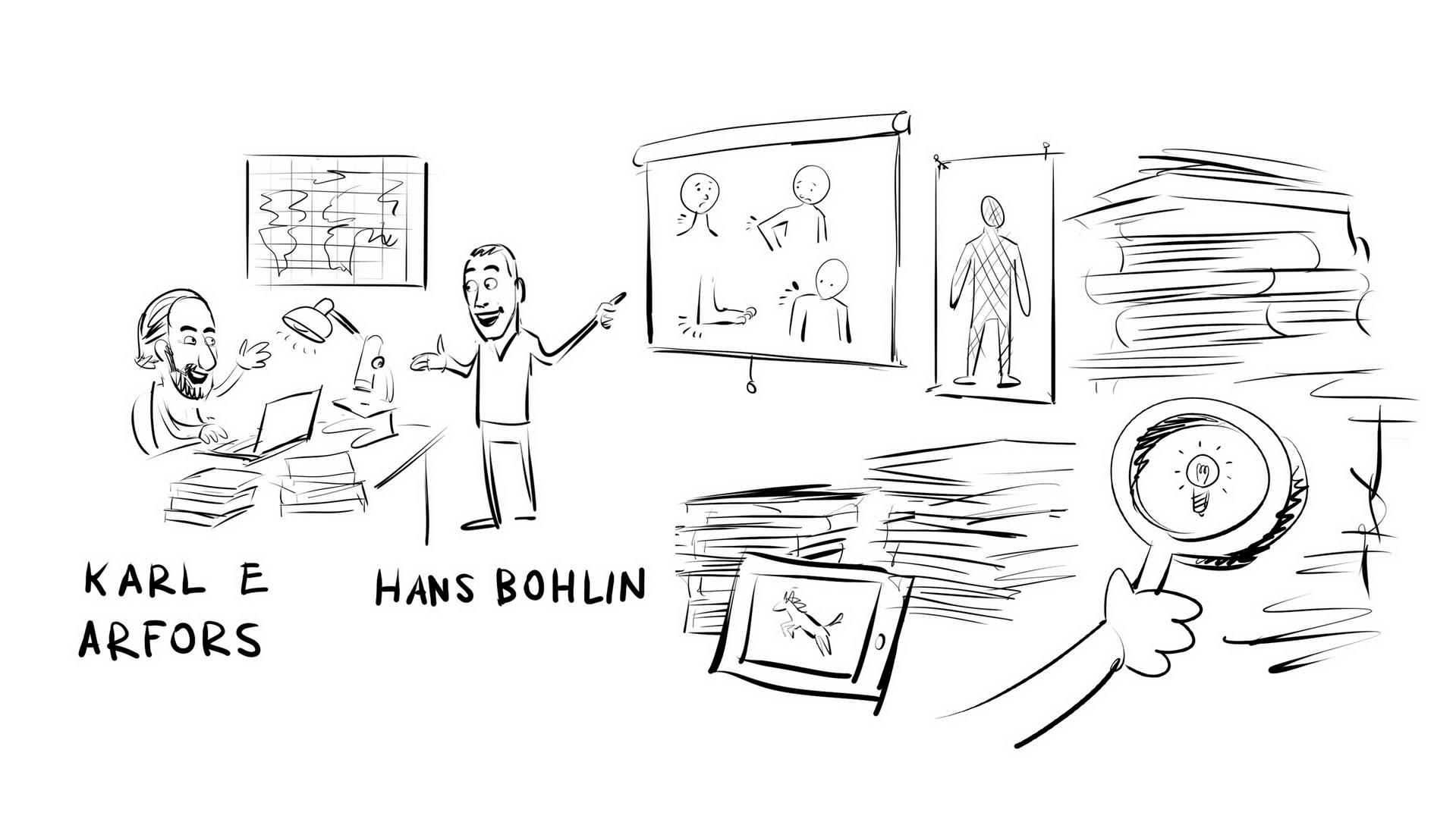

Fascia: New research changes the way we look at pain
From Newton, to Einstein, to the new wildfire of Fascia Research. How do we understand things from a different perspective?
- To understand another perspective it helps to take a closer look at our own. Why do “we” look at the world just the way “we” do?
- One way of finding out the origin of our perspective is to look at the ideology history. Ideas we today take for granted, how and where did they originate?
- “History of ideas” is, without doubt, a complex science but we took the liberty to create a simplified description:
We still believe in the false idea of a clockwork universe
Since ancient times, man has studied and tried to understand his surroundings: the nature, the earth, the sky, the stars and the planets.
When Isaac Newton in the late 17th century saw an apple fall to the ground he asked himself why this happened, how this was possible when the moon didn’t fall down?
His questions and experiments led to Newton’s laws of gravity and motion, and an image of the universe as a clockwork consisting of parts moving in a predictable pattern. Newton’s ideas formed the foundation of classical physics up to the 20th century; but partly still plays a dominant part of our worldview.
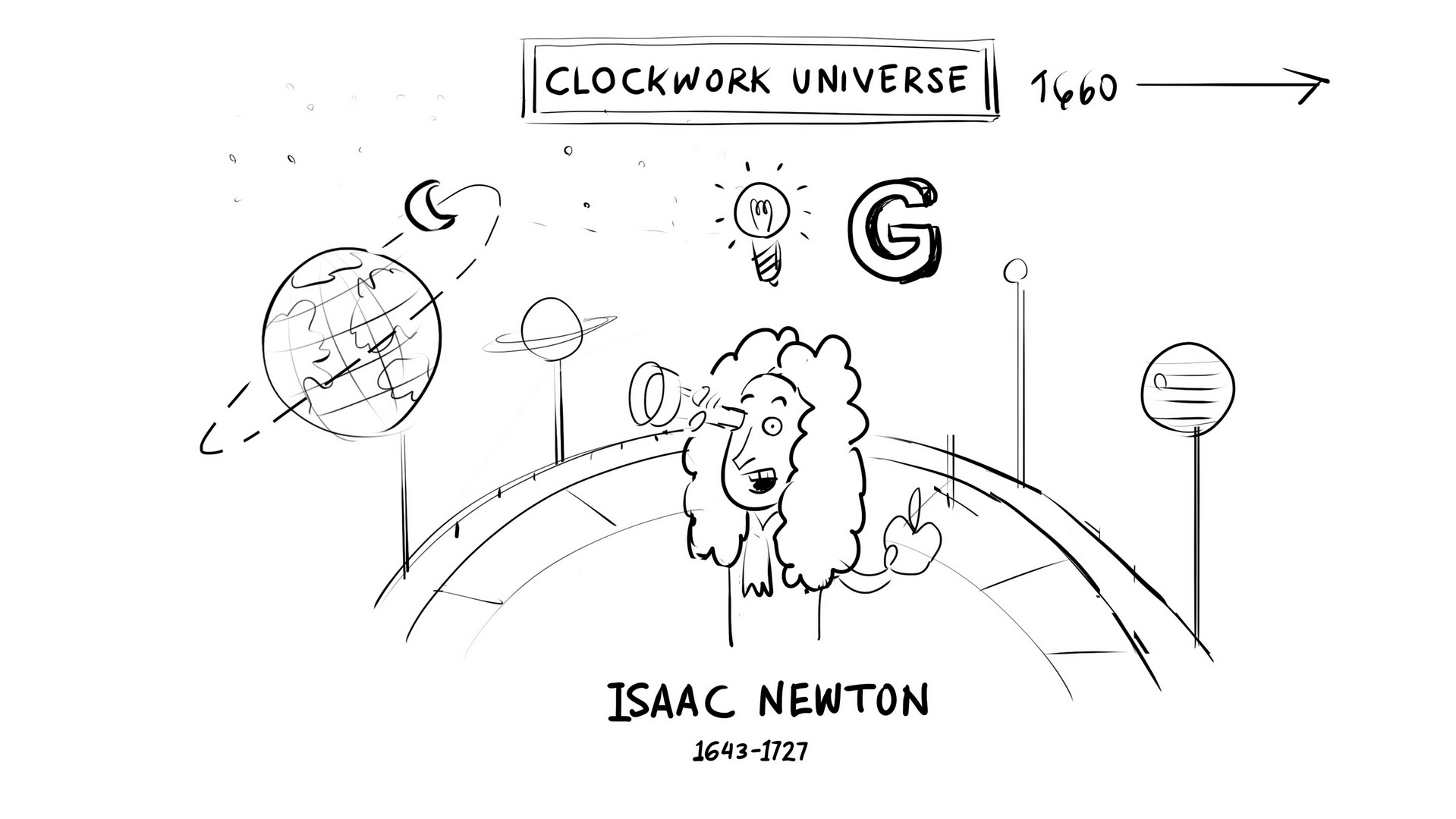
The time zone is just an invention – but what is time?
When new railways increasingly connected the world a need for a common time emerged. In 1879, Swedish “normal time” was introduced due to the fact that train traffic required dependable timetables. When the telegraph united the US and Europe, the global time was determined with the time zones we have today. But what is time?
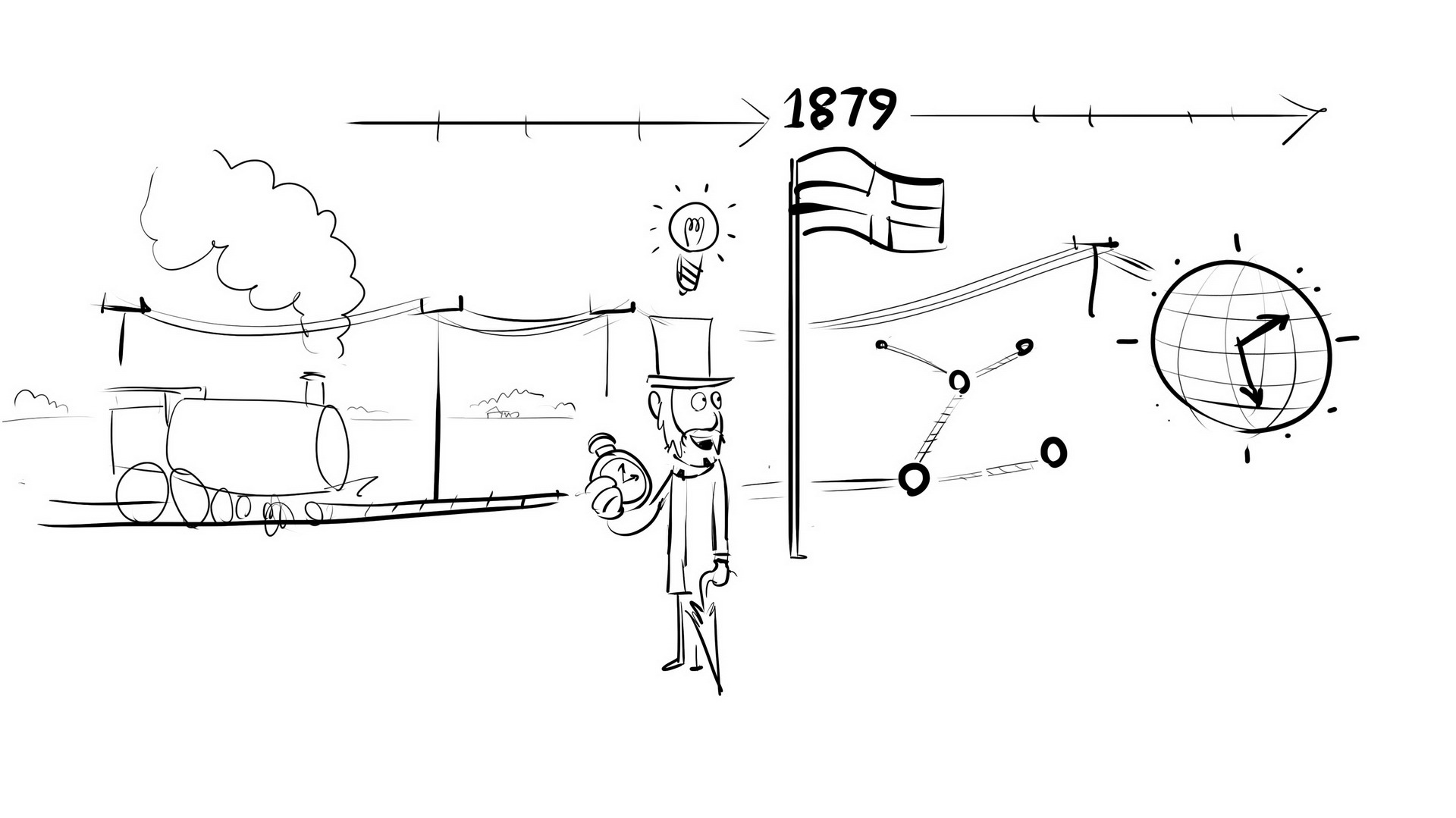
In physics, macro and micro must be coherent
When Albert Einstein launched the theory of relativity in the early 20th century, he turned everything upside down. Newton’s laws about gravity and motion no longer matched. The crux of physics is that it has to fit together, mathematically, from the smallest element (micro), to the largest solar systems (macro).
Relativity theory, universe and quantum physics have forced both physicists and mathematicians to reconsider.
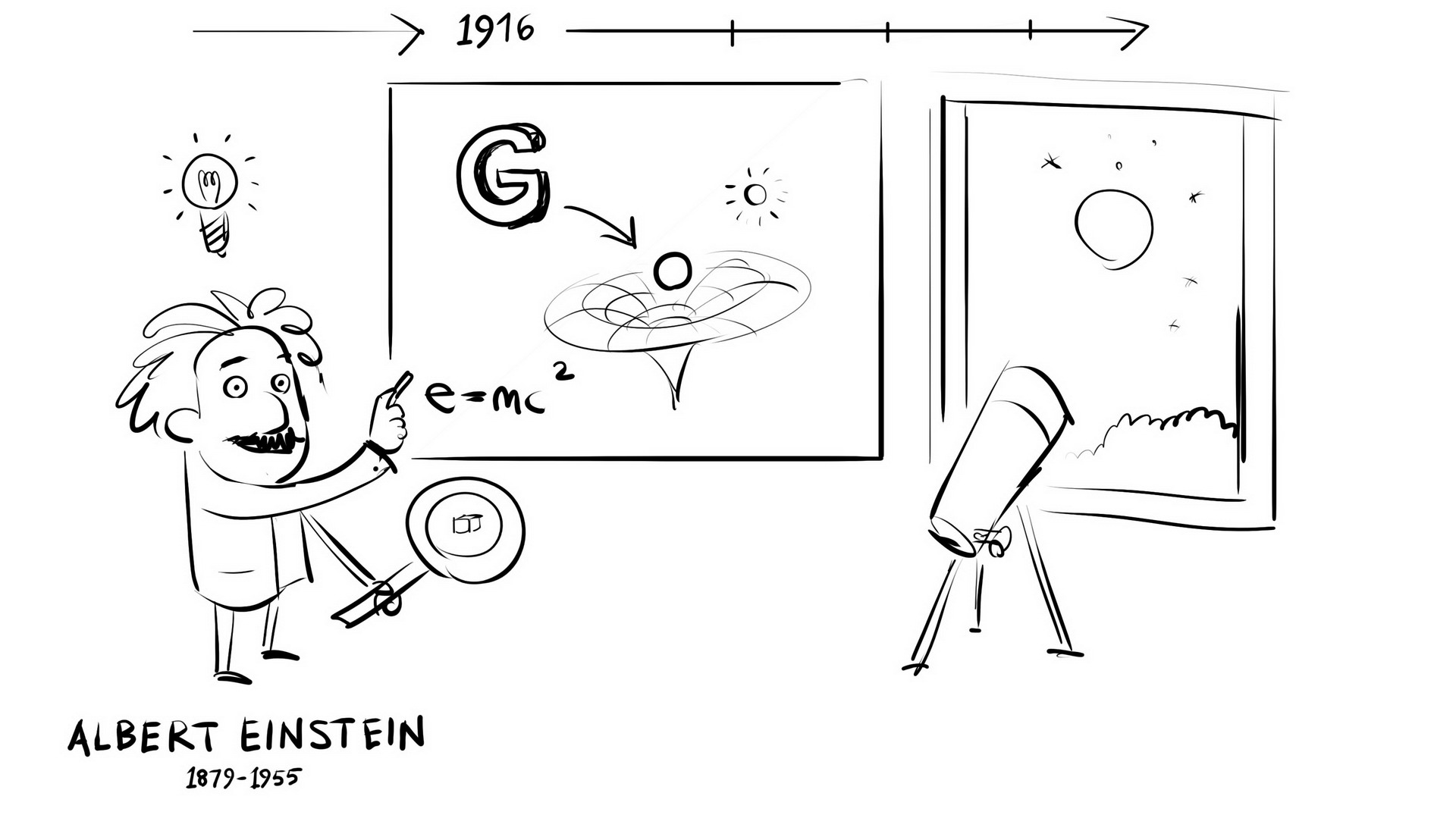
But how come micro & macro is not coherent in biology?
New discoveries awaken new insights. The electron microscope has taken us into the body and let us discover bacteria, viruses, genes, RNA and DNA. The deeper we have gone the more we have learned, but if physics must work from micro to macro – doesn’t the same apply for biology?
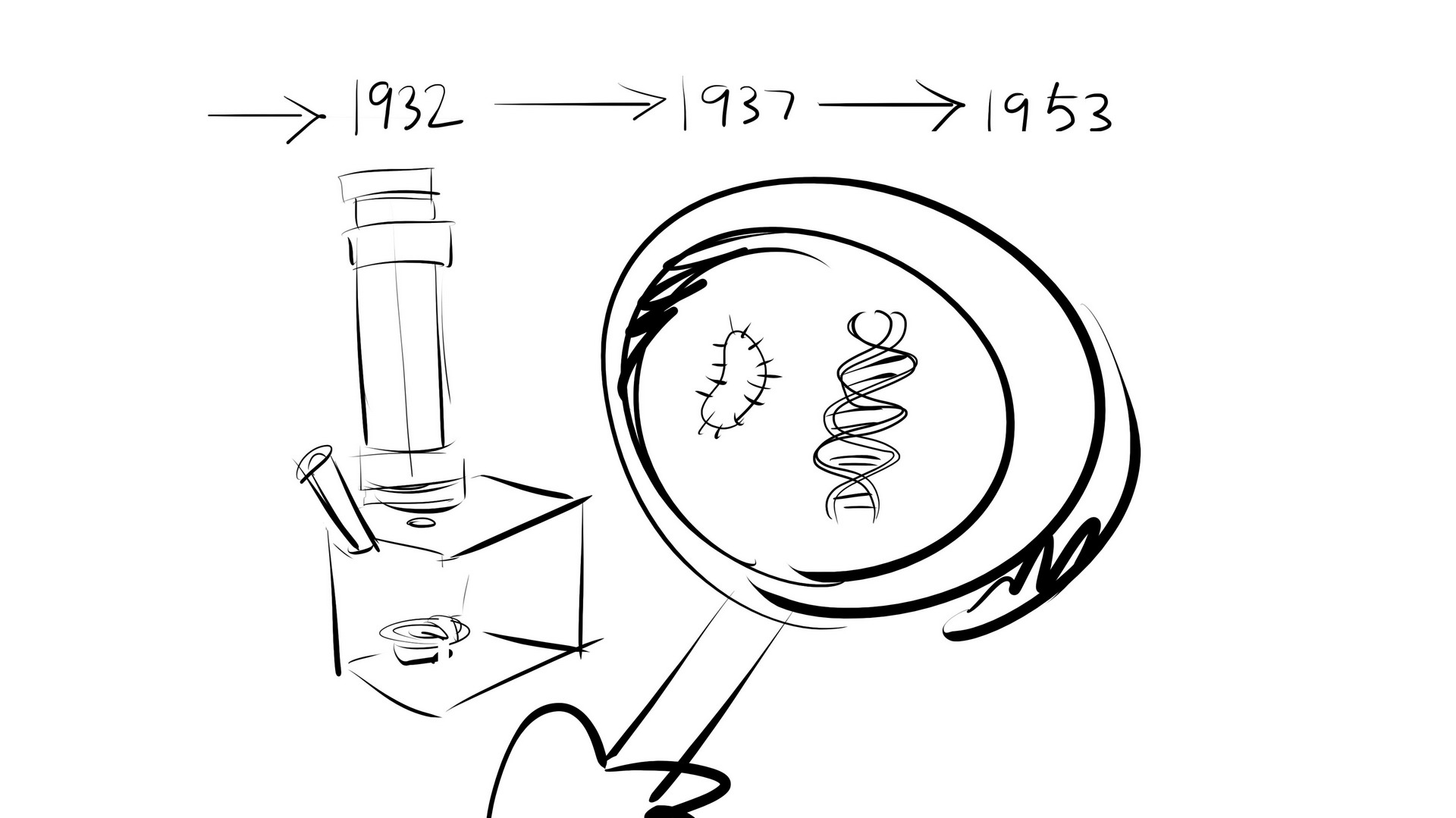
The idea of a skeleton holding up the body is absurd
In the 70s when the orthopedic surgeon Dr. Stephen Levin was at a natural history museum and saw the wires holding up the neck of a dinosaur, he did not get the picture to go together. How could his neck have been held up originally? The reason for the fascination is that it is a mechanically impossible structure – at least according to the traditional way of looking at the structure.
Why is this interesting? What Levin came up with was that the structural form that the architect Buckminster Fuller calls Tensegrity – a combination of the words Tension and Integrity – is also present in anatomy, and it explains how the dinosaur could keep his neck up.
Levin’s findings, which he termed Biotensegrity, changes the way we look at how the body is structured, and what really keeps it together. The skeleton is not, as previously thought, the hanger on which everything depends. It is rather the numb brace that keeps apart the Fascia layers and stabilizes the connective tissue structures. This has prompted fairly recent new studies of the connective tissue, the Fascia.
A side note: Needle Tower in Seattle, from 1968, is a fascinating piece of work of “tensegrity” in action. Six stories straight up in the air is held together and held up because of the tension and equilibrium – tensegrity – created between the different parts.
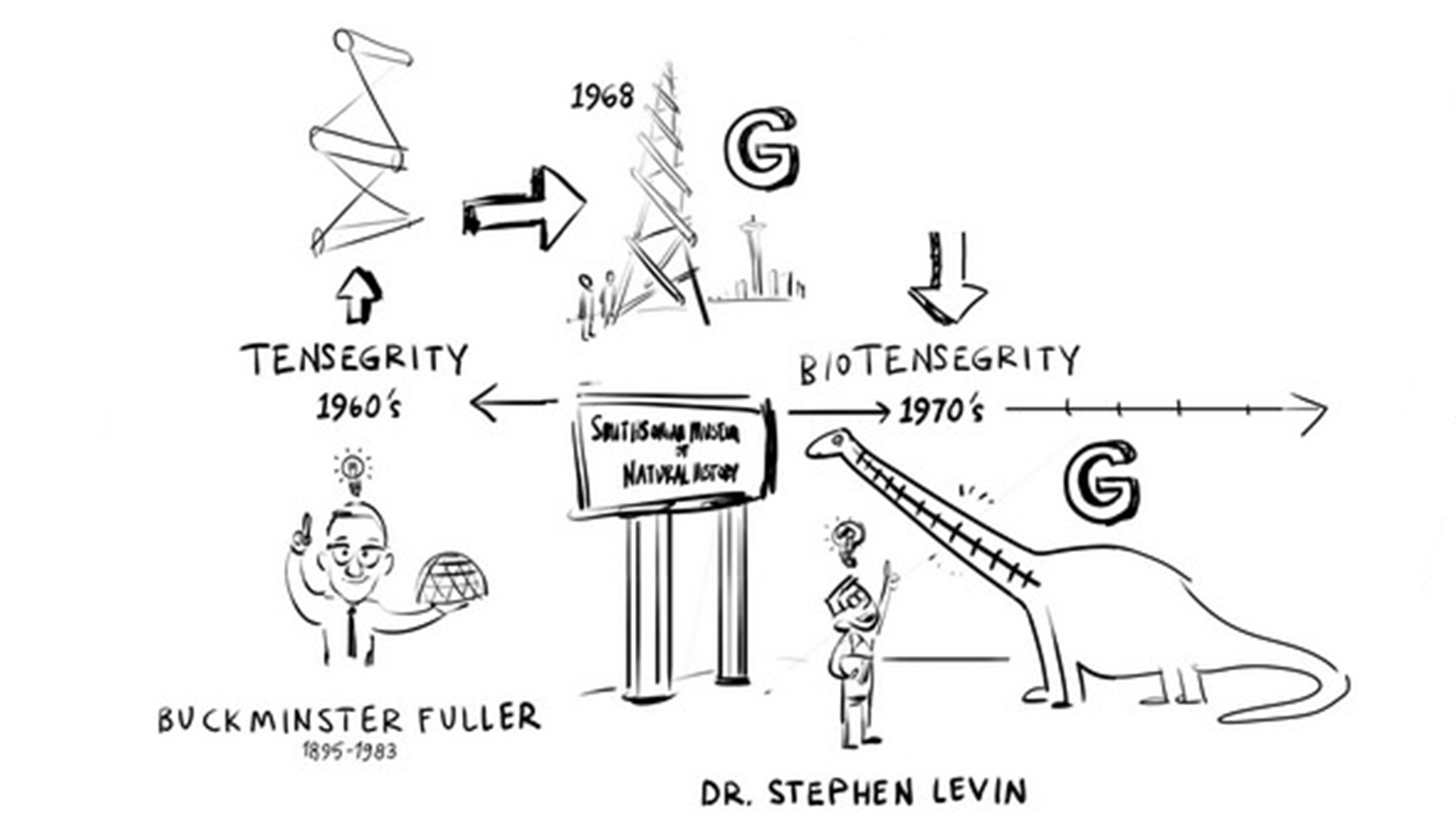
The Fascia is a structured system encapsulating everything – even the smallest cell
Fascia is a network of connective tissue enveloping everything in the body, from muscles to skeleton, and organs to cells. It is comparable to a cobweb of hard and soft components, threads as strong as steel yet super flexible – exactly what Levin proved with his Biotensegrity. Fascia makes the body gravity neutral so that it doesn’t collaps – it is basically an all encompassing body stocking from macro to micro.
In 1998 the biologist Donald Ingber showed that even the cell, the body’s smallest entity, is covered in Fascia and works as the cell’s scaffolding (read more in the article ”Architecture of Life”). Fascia is also vital for balance and coordination and contains nerve cells that signal pain to the nervous system; the inflammation cells are also here. Fascia protects against shocks by distributing load. For example, if you hit your foot, the Fascia makes sure that the stroke is received and dampened by both the legs, knees, hips and back.
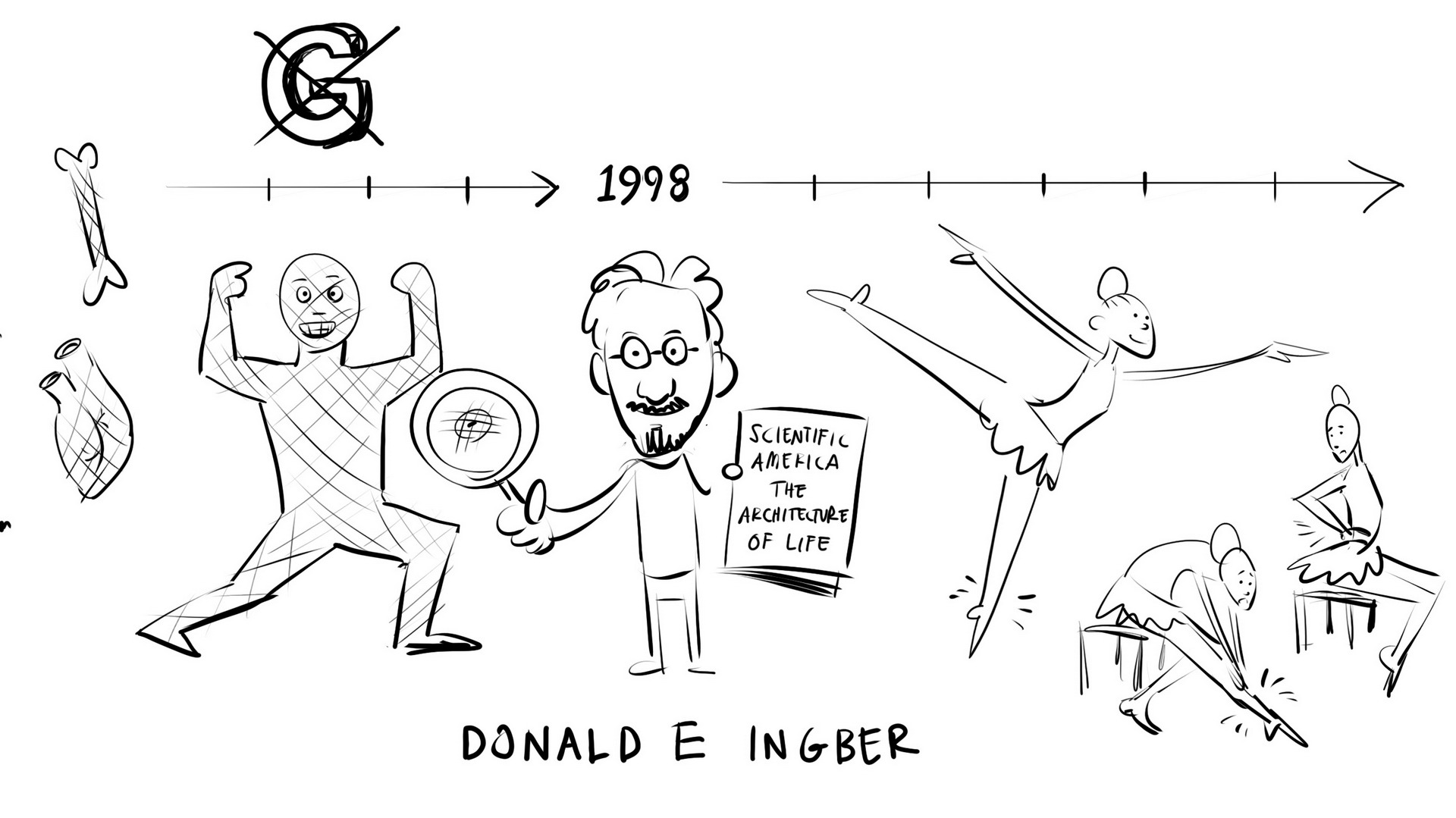
Fascia is everything – and is key to understand causes of low back pain
This is a relatively new research area. In 2005, the Fascia Research Society was formed, an international network of researchers dedicated to studying Fascia in detail. The surgeon Jean Claude Guimberteau presented a film about “living connective tissue” and noted that:
“We didn’t think Fascia was that big of a deal, but now we know it is everything”.
Anatomy professor Siegfried Mense showed that inflammation in the Fascia explains pain in the lumbar spine. And at the 2015 conference veterinarian Vibeke Elbrønd, from the University of Copenhagen, presented her study that horses have the same structures of Fascia as humans. She talked about how mechanical Swedish Fascia Vibess affect the Fascia during treatment and how it has been shown to turn off pain receptors in the Fascia, increase circulation and decrease inflammation.
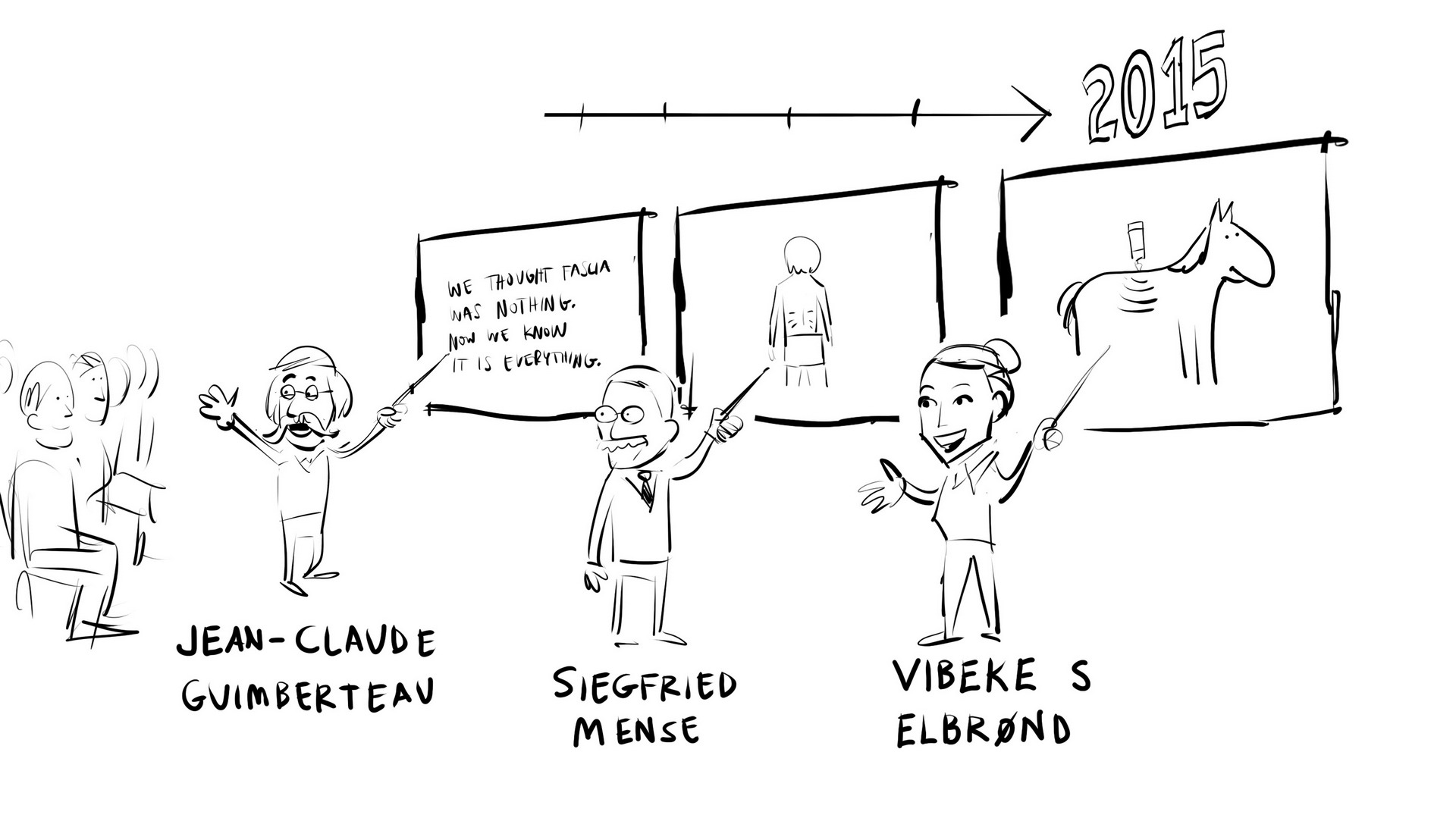
Inflammation in Fascia is connected to whiplash, tennis elbow & frozen shoulder
Back in Sweden innovator Hans Bohlin together with Professor Karl E Arfors engage in the search and research to uncover tissue mysteries and understanding more about Fasica – and new discoveries raise new insights.
Mense showed that inflammation of the Fascia leads to pain of the lumbar. Now we know that similar connections exist between Fascia inflammation and for example whiplash, tennis elbow and frozen shoulder; as well as diabetes, Alzheimer’s and even cancer.
New innovations facilitate the treatment of the Fascia in both humans and animals. Every month we see new reports on how thousands of horses run faster and people experience less aches and pains post treatment.
Research about the roll Fascia plays in our bodies continues and more discoveries are lurking around the corner…
